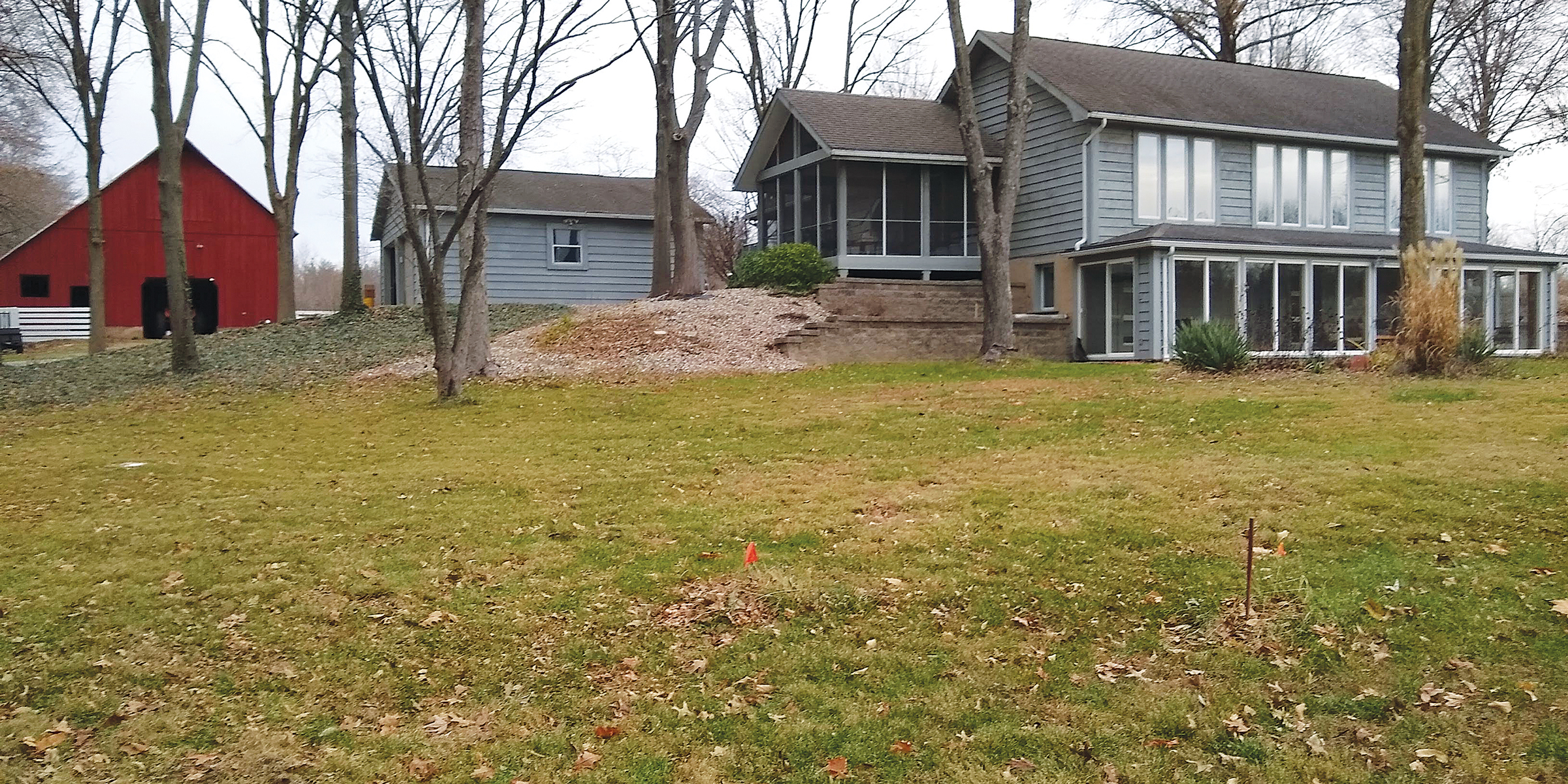In the early 1980s, an American energy crisis had passed. My wife, Jean, and I had had our first child, and we wanted to do something that would secure, rather than compromise, her future and that of our future children. So we dreamed and, in 1983, began laying plans for a home in the country that would minimize our impact on the environment.
We discovered a beautiful country property not far from where Jean and I had grown up, with trees surrounding the outskirts of the property and an open field for a future home. At the time, there were many approaches to building distinctly energy-efficient homes. Homes that were heated passively by the sun included large windows on the south side. Their own “greenhouse effect” could be used to heat a home during cold Midwest winters. Our property had the perfect orientation for this option; it pointed north and south, which was perfect for taking full advantage of the sun for heating.
So we planned and designed our own New England-style home with many south-facing windows. The basement has three sides underground, and its fourth side, the south wall, receives excellent solar exposure through a sunroom that forms its outer shell. The heat energy gained in the space is transferred to our home’s interior by way of blower fans mounted in the sunroom ceiling.
On clear, sunny days with temperatures in the single digits, the sunroom can yield temperatures above 80 degrees Fahrenheit, which is distributed into our home via the sunroom fans. To store daytime heat gain, we use ceramic tiles throughout the house, along with the thermal capacity of the first-floor foundation walls and concrete floor. During the day, the tiles and basement slow the home temperature’s rise, while in the evening, the heat is slowly released back into the home. When the sun isn’t shining, we rely on individual electric baseboard heaters with individual thermostats. All the thermostats are programmable — another technique to reduce energy costs, as they can be modified to appropriately match our living behaviors.

Designing Our Home
Jean designed the layout, construction details, and general appearance of the home. We calculated the heating statistics for the house in Btus, considering the heat gain and loss through south-facing windows, the square footage and insulation, and the thermal storage capacity.
A portion of the first and second floor has a vaulted ceiling with a ceiling fan for increased air circulation, and strategically located floor vents provide a closed-loop air path around the house. The fan is controlled by a thermostat, so anytime the upstairs is too warm, cool air from the first floor helps displace warmer air on the second floor.
The sunroom was designed with plastic foam insulation on the north wall covered with wood siding to allow it to build up heat quickly, with three awning-type windows on the north wall of the sunroom (on the south side of the house) that could be opened. A closed-loop air exchange was needed between the sunroom and the house interior as well, so the sunroom temperature had to be monitored to determine when to manually open and close the awning window. As luck would have it, we found a new product by Andersen Windows & Doors designed for a motor attachment to an awning window combined with a rain sensor to close when it senses moisture. With augmentation, it could be applied to control the window between our sunroom and the house interior by using a sunroom temperature sensor.
The sunroom also includes a heat exchanger that preheats outside water prior to being directed into the main water heater to save energy.
The Build

At the time of the build, mortgage rates were around 14 percent, so we borrowed as little as we could and took out a mortgage against our property instead of using a typical construction loan. Except for the concrete basement foundation, we built the house with only family support. Weekends and weeknights were filled with building. We were fortunate to have a talented group of hard workers who all helped. We started the house in August, sold our former home the following May, and moved in at the end of that month.
The home is located in an open field, and trees are strategic for shading the east and west sides from the summer sun, so after moving in, we planted trees to eventually create shade and windbreaks. On the east and west sides we planted beautiful oaks and hardwood maple trees, while on the south side were tulip trees that formed a thin silhouette of branches to minimize shading in winter but provide large leaves to shade the house in summer.
During summer, we use air conditioning for cooling supported with a roof overhang that shadows the south-facing windows. The strategic placement of the trees we planted around the house provides great shading during summer and, along with the natural cooling provided by Mother Earth, reduces our summer energy costs.
Living Rural
Living the rural American life was a dream Jean and I had for our family, with a goal of minimizing our impact on the environment by how we lived. Our energy-efficient home has met our expectations and provided our children with a deep appreciation of nature and the environment in which we live.
Rich and Jean Schaefer have three grown children and six grandchildren who all appreciate the outdoors and the importance of energy conservation.
Do-It-Yourself Solar Heating Plans

Heat Your Home for Free is a collection of classic articles from Mother Earth News that show how simple solar systems can heat your home, garage, shop, barn, commercial building — just about any structure with a south-facing wall. Best of all, this e-handbook shows how you can design, build, and install solar-powered heating systems yourself! This title is available at Store.MotherEarthNews.com or by calling 800-234-3368. Item #3463.
